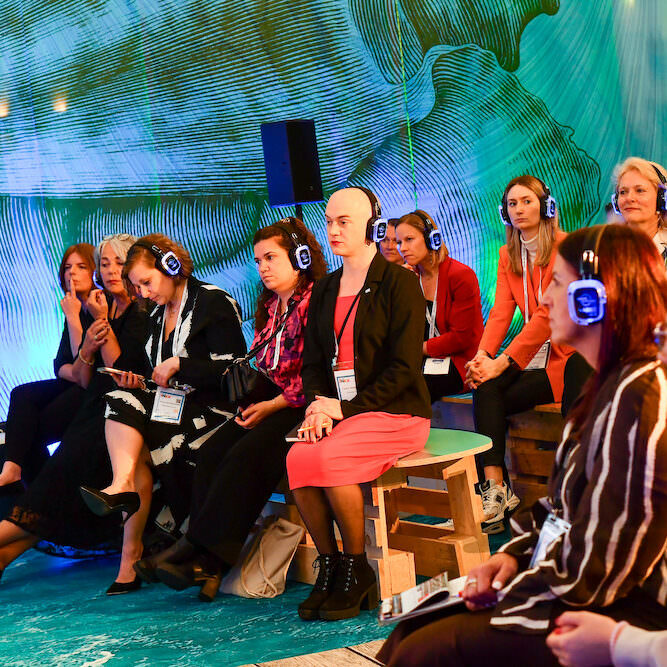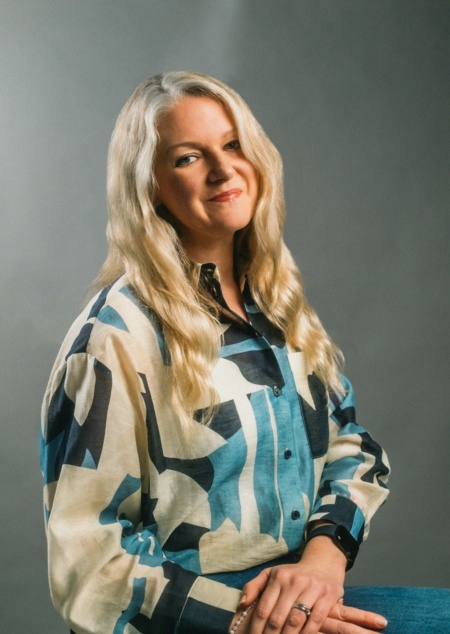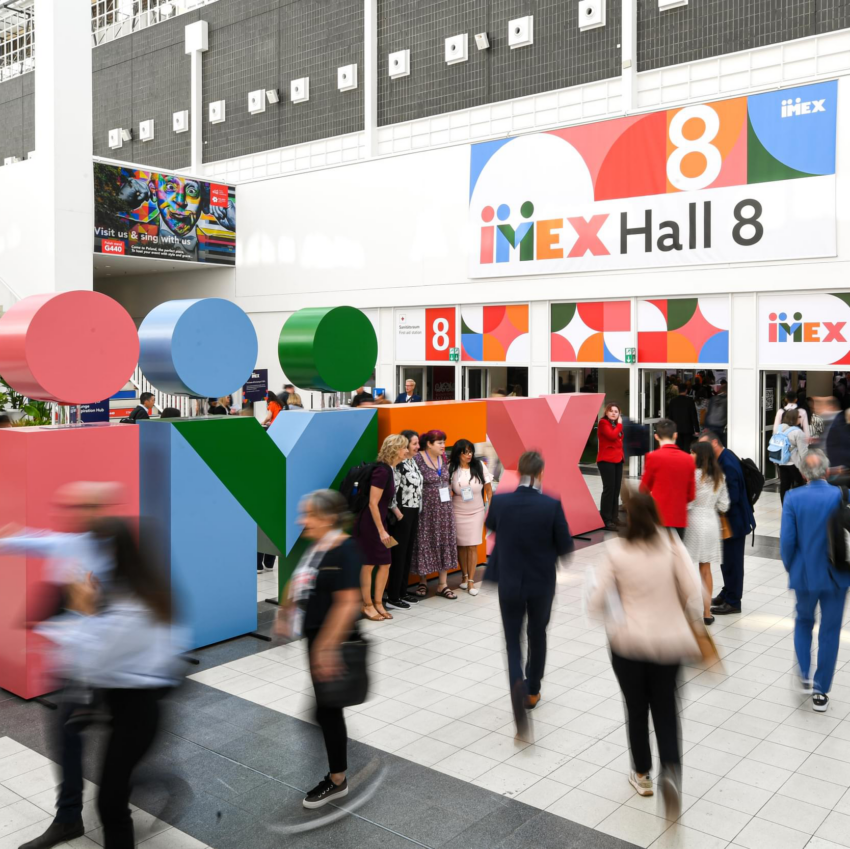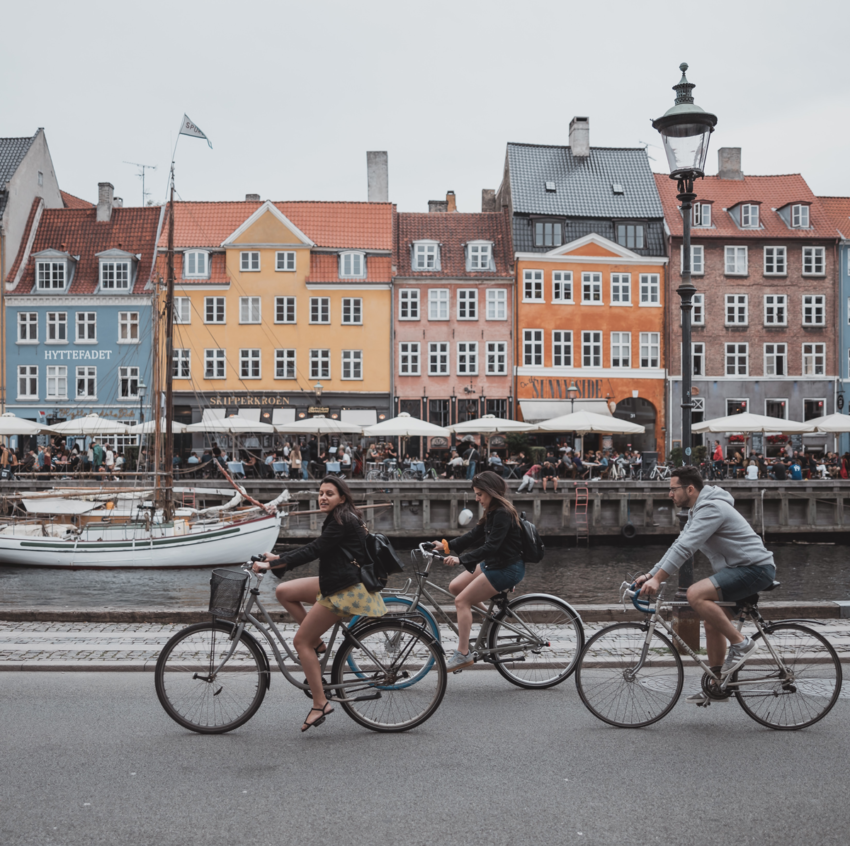Emotions matter: how to craft unforgettable experiences for your event attendees
Pigalle Tavakkoli, founder of the School of Experience Design, spoke at IMEX Frankfurt for the first time in 2023.
Specializing in a cross-disciplinary experience design approach, Pigalle combines art and science to create emotionally charged, unforgettable experiences.
Ahead of the inaugural WXO (World Experience Summit) in London, where she presented on the art and science of activating imagination, and ran a series of PLAY to Innovate workshops, Ellie Scott caught up with her to talk behavioral change, experience design and transformation.
At IMEX you spoke about the art and science of designing emotions. Can you explain what that means?
Yes, typically when we’re designing experiences, our aim is to change behavior. Whether it’s led by the client or the project brief, ultimately there’s some form of change we want to create in our audience.
Having produced experiences for 15 years, when I observed audiences, no matter the scale of the experience - I found commonality in their responses. The emotional reactions they felt would often lead to change. People would say “this event has changed my life!”. I realized generating intense emotions was key to activating change. I started to recognize a sequence that led to behavior change, that started with changing people’s emotions.
Alongside producing experiences, I’ve also been a teacher for 10 years. I co-developed the UK’s first short course in experience design at Central Saint Martins, (part of the University of the Arts). Teaching while practicing experience design, gave me an incredible opportunity to be hands-on and to develop methods to explain what I was doing for others to apply. To research the science to back up my theories and turn them into clear applicable methods. So, I like to say I walked the walk before I talked the talk.
I found the science to back up my model, the ‘emotion change equation’: if you want to change behavior (one of the hardest things to do) and although this might sound counterintuitive, I recommend that you don’t start by trying to change behavior. Instead, focus on designing to change emotions and thoughts. If you do this effectively, a natural outcome will be a change in behavior.

Why is it important to design experiences that evoke emotion?
As background to our attitude towards emotions: during the Age of Reason (from the late 17th to the early 19th century), thinking emerged that to reach our full potential as human beings, we needed to separate thoughts from emotions. Our hearts from our minds. Because emotions are complex. They get in the way. They confuse our decision making. The most famous proponent of this was the French philosopher, René Descartes who said, “I think, therefore I am”.
However, more recently Nobel prize winning psychologist Daniel Kahneman proposed that the brain operates as two systems. One that is fast and intuitive, and the second that is slow and deliberate. He theorized that we think with system one unconsciously up to 95% of the time, and with system two consciously and rationally for the remaining 5%. In current neuroscience this thinking is widely upheld, with some saying the unconscious drives our decisions up to 98% of the time. I suggest we embrace the fact that we’re a highly emotional species, and design for the 98%.
Today we have a rich opportunity to design for us as human beings. That’s how we’re more likely to connect with our audience. When we’re designing experiences we should start by capturing hearts, because then we’ll be able to capture minds.
You spoke about experiences being transformative, what does that mean?
When we’re designing events, often all our time and energy goes into designing form and function. I think of that aspect as the external event. It’s the thing that physically takes place outside the audience.
But when we’re designing an experience, we also design the moment of interaction. In that moment, the external event sets off an internal reaction leading to changes in the way the audience feel, think and behave. I call this the emotion change equation. In experience design we design both the external design form and function, and the internal experience.

When events spark these internal reactions and experiences, they become unforgettable memories. Long after the experience, our audience continue to change, carrying it into their lives, as it continues to affect them. This then becomes a transformative experience. So, in fact when we’re designing experiences, I like to say we’re also agents of transformation.
Can you share some examples of transformation?
A long-term outcome could be that want your attendees to be more connected to their community. Or you could want to them to embrace sustainability, by learning about sustainable initiatives at the event and returning home to integrate sustainability into the way they live.
Or it could be empowerment. The event designer may want people to feel braver about meeting new people, even to form communities. The next step is to work out which emotions, thoughts and actions are needed to help them feel that community connection.
Once you have these anchor points, designing the experience with intention becomes more focused and possible to achieve. It makes the ideation and design process simpler because you’re taking a strategic approach to the design process. You’re working backwards from the long-term impact and transformation goals, which reveals what you need to design to get there.




